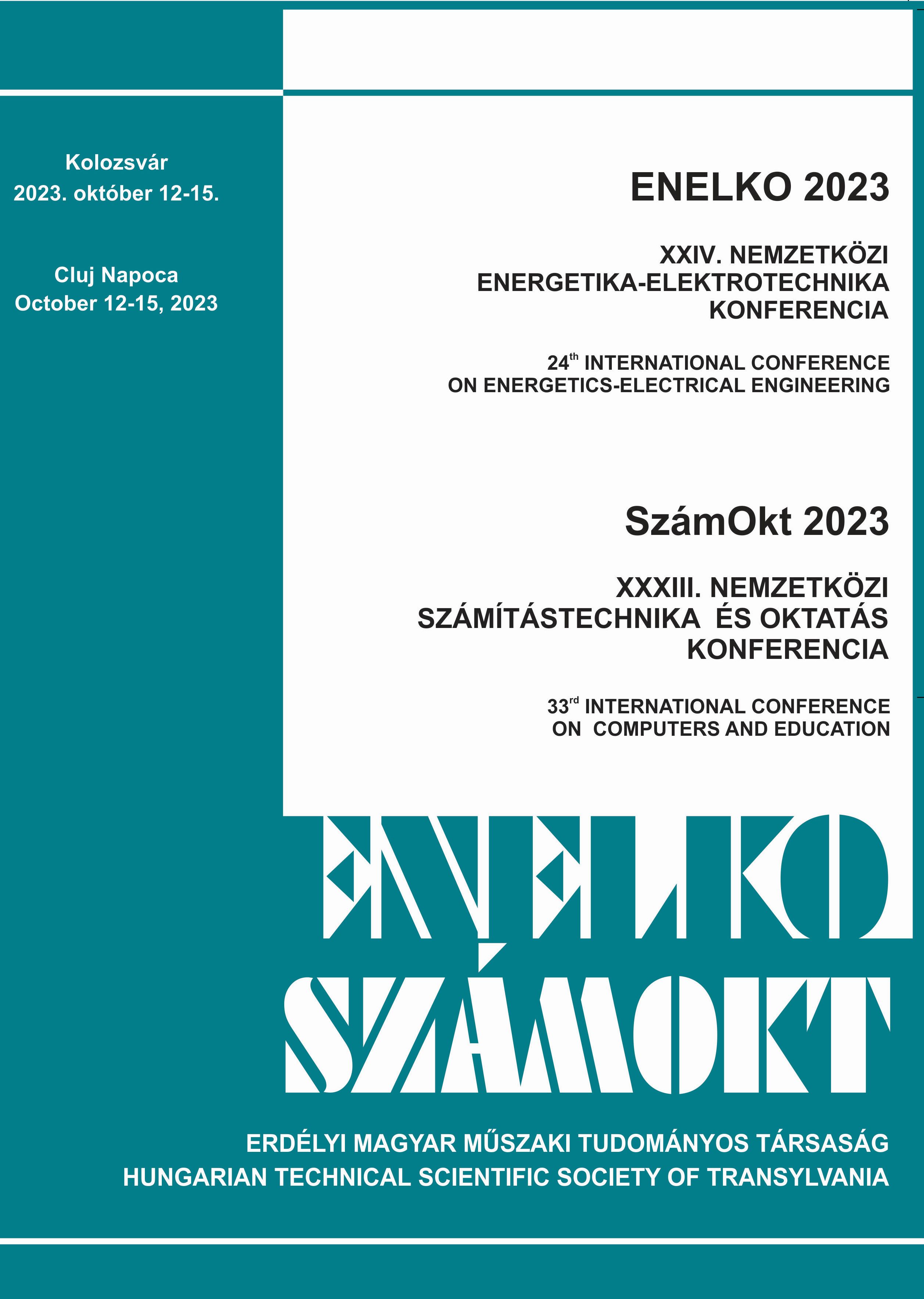Nagysebességű kommunikációs folyamatok nem-stacionárius datagram forgalmának időbeli mintázata
On the time patterns of the nonstationary datagram based fast communication processes
Keywords:
datagram, high-speed network, nonstationarity, Fourier transform, nonlinearity, Wavelet transform, Empirical Mode Decomposition, Variational Mode Decomposition, /, datagram, nagysebességű hálózat, nem-stacionaritás, nem-linearitás, Fourier-transzformáció, Wavelet-transzformáció, Empirical Mode Decomposition, Variational Mode DecompositionAbstract
Nowadays expectations against modern communication services involve not just Quality of Service (QoS) enhancement for real-time applications but also increased transmission rate between the storing and processing of Big Data nodes. Transmission Control Protocol (TCP) has strict flow control of the data stream providing automatic adaptation to the path load of the process-to-process communication. User Datagram Protocol (UDP) based solutions are proposed to settle the communication efficiency. In this paper, we analyse the effect of three independent communication parameters on the efficiency of looped UDP communication: the size of the Maximum Transfer Unit (MTU), the bandwidth of the end-to-end session, and the segment size of the UDP protocol data unit. The usage of nonstationary multi-resolution methods helps to identify three characteristic patterns offering identification of the objective qualitative features of the UDP-based looped datagram communication services.
Kivonat
Napjainkban a modern kommunikációs rendszerekkel szembeni elvárások nem csupán a szolgáltatás minőségének (QoS) javítását jelentik a valós idejű alkalmazások számára, hanem a Big Data hubok tárolása és feldolgozása közötti megnövelt átviteli sebességet is. A Transmission Control Protocol (TCP) szigorúan szabályozza az adatfolyamot, így automatikusan alkalmazkodik a folyamatok közötti kommunikáció által használt útvonal terheléséhez. A tartalom átviteli hatékonyságának javítása céljából újabban az User Datagram Protocol (UDP) alapú megoldások javasoltak. Ebben a cikkben három független kommunikációs paraméter hatását elemezzük a visszacsatolásos UDP kommunikáció hatékonyságára vonatkozóan: a maximális átviteli egység (MTU) mérete, a végpontok közötti munkamenet sávszélessége és az UDP szegmens mérete. A nem stacionárius többfelbontású módszerek alkalmazása lehetővé tette három jellegzetes forgalom-mintázat megkülönböztetését, amely a visszacsatolásos datagram kommunikációs szolgáltatások objektív minőségi jellemzőinek beazonosítását szolgálja.
References
M. B. Abd-el-Malek, S. S. Hanna: Using filter bank property to simplify the calculations of Empirical Mode Decomposition, Communications in Nonlinear Science and Numerical Simulation 62 (2018), pp. 429–444, issn: 1007-5704, doi: https://doi.org/10.1016/j.cnsns.2018.02.035.
R. Bazi, T. Benkedjouh, H. Habbouche, S. Rechak, N. Zerhouni: A hybrid CNNBiLSTM approach-based variational mode decomposition for tool wear monitoring, The International Journal of Advanced Manufacturing Technology 5 (2022), pp. 3803–3817, doi: 10.1007/s00170-021-08448-7.
P. Bloomfield: Fourier analysis of time series: an introduction, John Wiley & Sons, 2004.
F. T. AL-Dhief, N. Sabri, N. A. Latiff, M. Abbas, A. Albader, M. A. Mohammed, R. N. AL-Haddad, Y. D. Salman, M. Khanapi, et al.: Performance comparison between TCP and UDP protocols in different simulation scenarios, International Journal of Engineering & Technology 7.4.36 (2018), pp. 172–176.
K. Dragomiretskiy, D. Zosso: Variational Mode Decomposition, IEEE Transactions on Signal Processing 62.3 (2014), pp. 531–544, doi: 10.1109/TSP.2013.2288675.
B. Eckart, X. He, Q. Wu: Performance adaptive UDP for high-speed bulk data transfer over dedicated links, in: 2008 IEEE International Symposium on Parallel and Distributed Processing, IEEE, 2008, pp. 1–10.
Fast transport layer protocol: QUIC, Official web site of IETF QUIC Working Group, url: https://quicwg.org/.
P. Flandrin, G. Rilling, P. Goncalves: Empirical mode decomposition as a filter bank, IEEE Signal Processing Letters 11.2 (2004), pp. 112–114, doi: 10.1109/LSP.2003.821662.
Z. Gál, G. Kocsis, T. Tajti, R. Tornai: Performance evaluation of massively parallel and high speed connectionless vs. connection oriented communication sessions, Advances in Engineering Software 157-158 (2021), p. 103010, issn: 0965-9978, doi: https://doi.org/10.1016/j.advengsoft.2021.103010.
S. Garg, M. Kappes: An experimental study of throughput for UDP and VoIP traffic in IEEE 802.11 b networks, in: 2003 IEEE Wireless Communications and Networking, 2003. WCNC 2003. Vol. 3, IEEE, 2003, pp. 1748–1753.
J. Gilles: Empirical Wavelet Transform, IEEE Transactions on Signal Processing 61.16 (2013), pp. 3999–4010, doi: 10.1109/TSP.2013.2265222.
D. Griffin, J. Lim: Signal estimation from modified short-time Fourier transform, IEEE Transactions on Acoustics, Speech, and Signal Processing 32.2 (1984), pp. 236–243, doi: 10.1109/TASSP.1984.1164317.
Y. Gu, R. L. Grossman: UDT: UDP-based data transfer for high-speed wide area networks, Computer Networks 51.7 (2007), pp. 1777–1799.
E. He, J. Leigh, O. Yu, T. A. DeFanti: Reliable blast UDP: Predictable high performance bulk data transfer, in: Proceedings. IEEE International Conference on Cluster Computing, IEEE, 2002, pp. 317–324.
N. E. Huang, Z. Shen, S. R. Long, M. C. Wu, H. H. Shih, Q. Zheng, N.-C. Yen, C. C. Tung, H. H. Liu: The empirical mode decomposition and the Hilbert spectrum for nonlinear and non-stationary time series analysis, Proceedings of the Royal Society of London A: mathematical, physical and engineering sciences 454.1971 (1998), pp. 903–995.
H. K. Rath, A. Karandikar: Performance analysis of TCP and UDP-based applications in a IEEE 802.16 deployed network, in: 2011 The 14th International Symposium on Wireless Personal Multimedia Communications (WPMC), 2011, pp. 1–5.
G. Rilling, P. Flandrin: One or Two Frequencies? The Empirical Mode Decomposition Answers, IEEE Transactions on Signal Processing 56.1 (2008), pp. 85–95, doi: 10.1109/TSP.2007.906771.
R. C. Sharpley, V. Vatchev: Analysis of the Intrinsic Mode Functions, Constructive Approximation 24 (2006), pp. 17–47, doi: 10.1007/s00365-005-0603-z.
M. Soni, B. S. Rajput: Security and performance evaluations of QUIC protocol, in: Data Science and Intelligent Applications: Proceedings of ICDSIA 2020, Springer, 2021, pp. 457–462.
Y. Yang, J. Deng, D. Kang: An improved empirical mode decomposition by using dyadic masking signals, Signal, Image and Video Processing 9.6 (2015), pp. 1259–1263, issn: 1863-1711, doi: 10.1007/s11760-013-0566-7.





